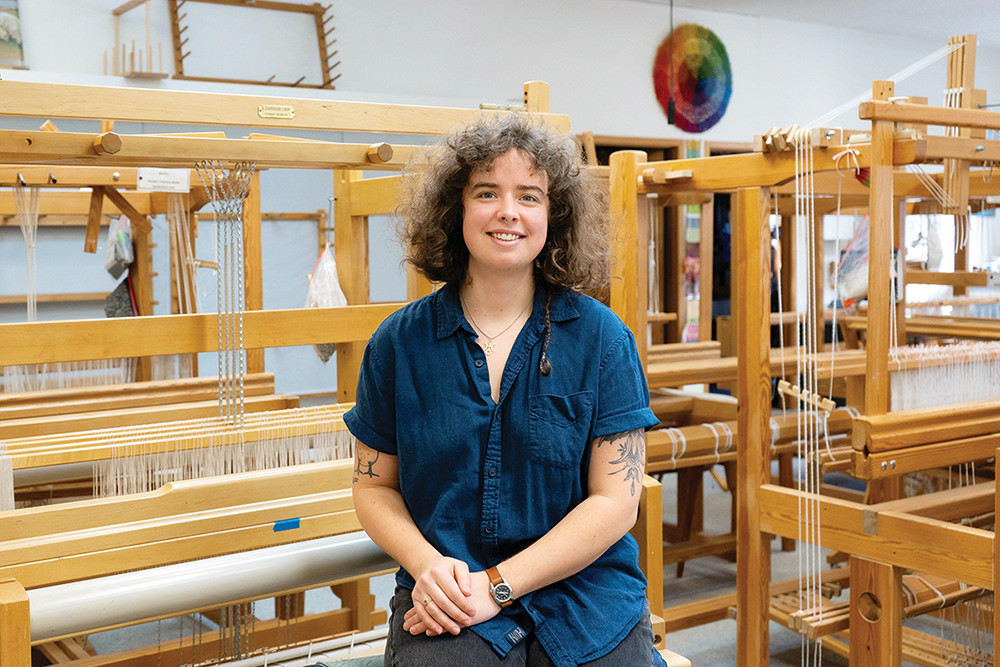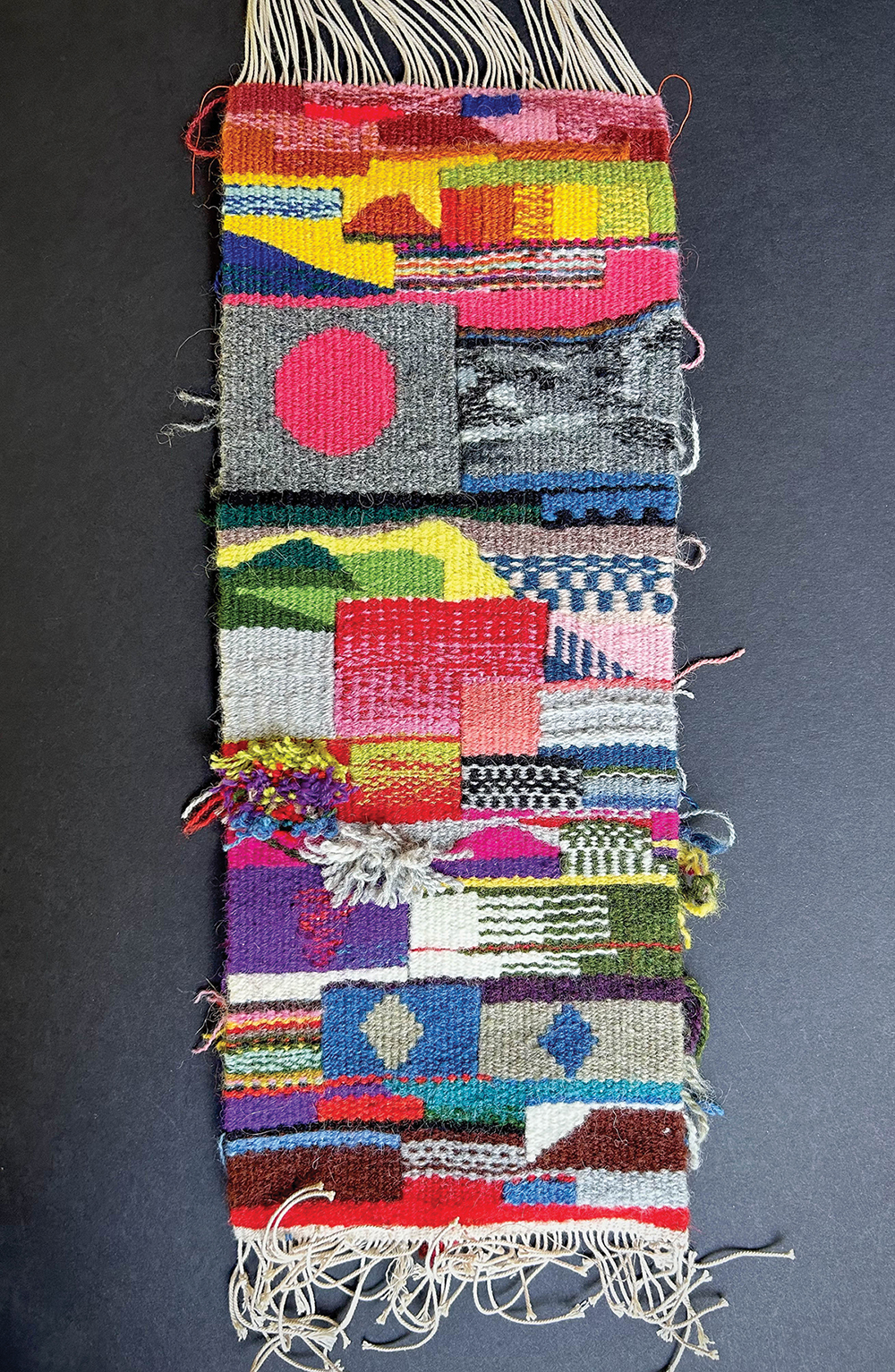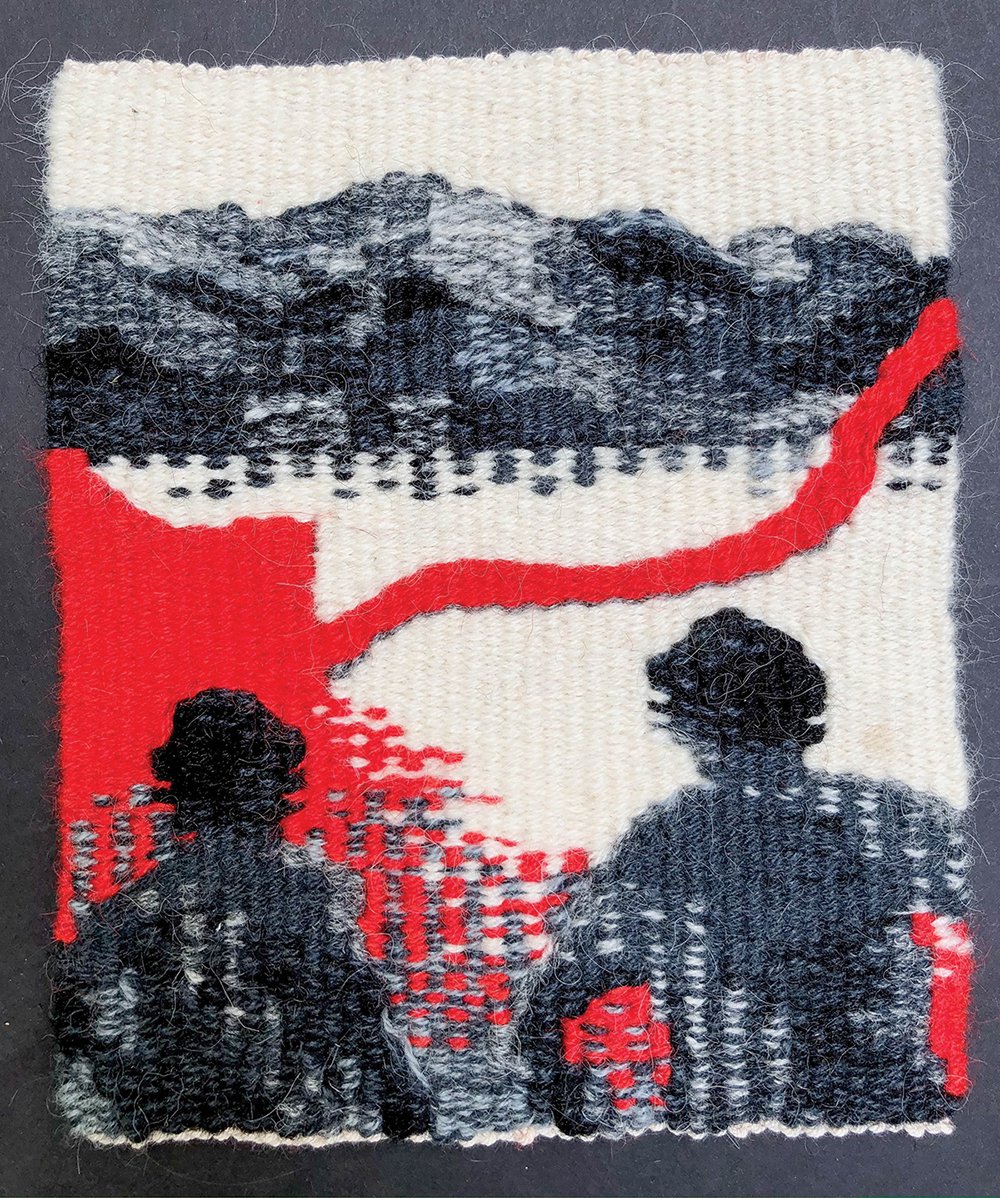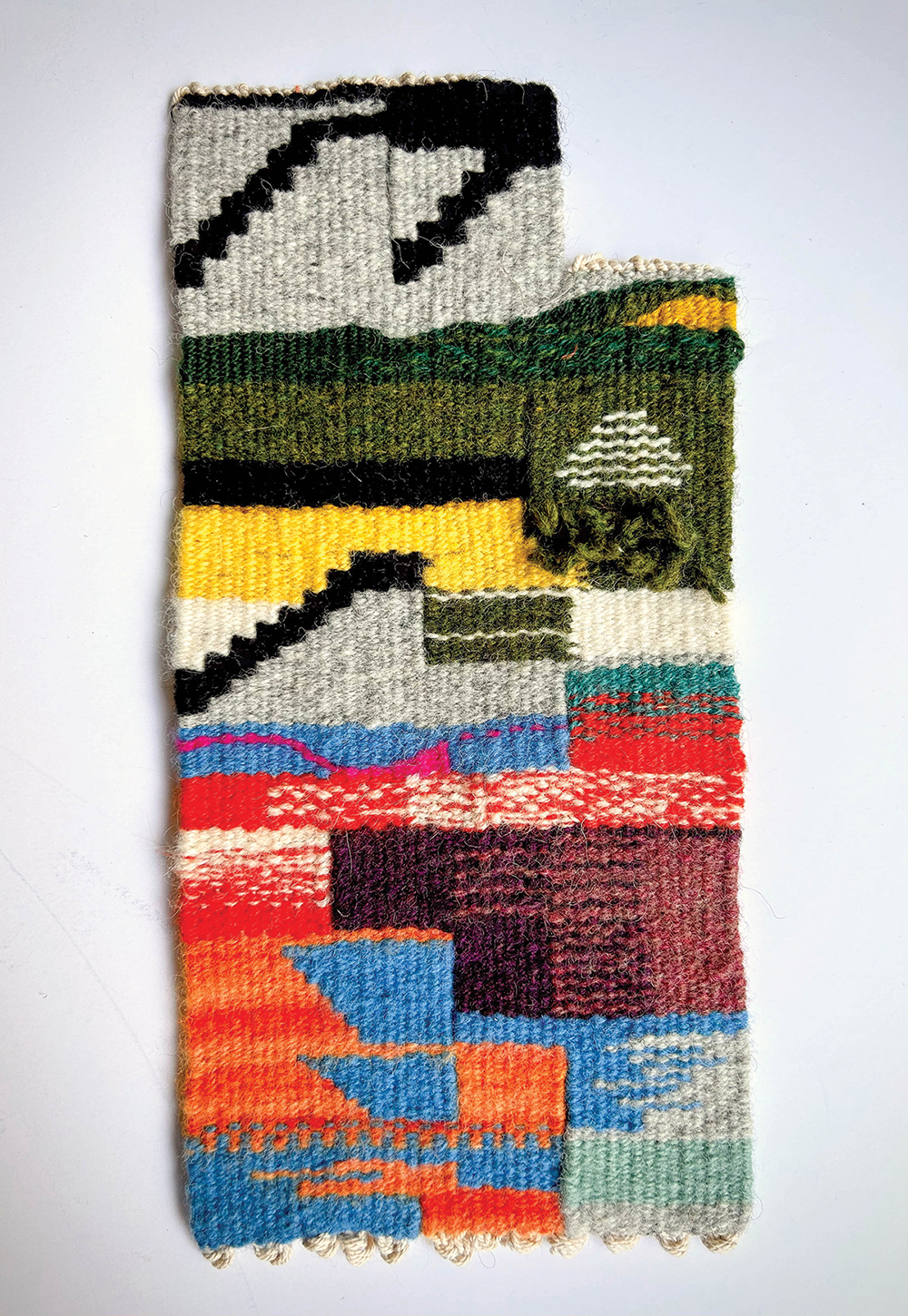Weaver brings a cinematic eye to a traditional art form

Allie Dudley is an enthusiastic teacher as well as maker.
Photo by Clay Nations Photography
Having developed an interest in 35-millimeter, black-and-white analog photography in high school, textile artist Allie Dudley attended college not for fiber craft, but with aspirations to become a movie projectionist or pursue avant-garde filmmaking. That may seem worlds away from weaving and tapestry making, but the two disciplines aren’t so far apart for Dudley — who found a peculiar yet practical similarity between operating a loom and working with a movie camera.
“Looking back, I can see why the film camera and projector remind me of the physical action of working a loom. They are both big and clunky pieces of machinery. There’s a film reel in the camera or projection equipment that you have to thread through all the right sprockets that the film winds on, and you have to make sure you follow the right path and in the right order. That machine aspect is so similar to how you have to set up your loom.”
Dudley graduated with honors in 2016 from the University of Chicago, with a Bachelor of Arts in Cinema and Media Studies. But for students who study art, the chances of finding steady employment and a career to support themselves are often slim to none. “My prospects weren’t great, and I was having a crisis about what to do once I graduated. I realized I wouldn’t have a career in film unless I wanted to either remain in academia forever or sell my soul. But just as I was finishing college, a friend of mine who was at Warren Wilson [College], and knew how much I liked to knit, said I should try weaving. They thought I’d love it, and they were right. As soon as I did it I decided, “‘I’m going to be a weaver.’”

In the spring of 2017, Dudley attended Penland School of Craft for eight weeks of concentrated weaving studies and swiftly became immersed in not just practicing but also teaching fabric arts. Following residencies at Penland in 2019 and at the John C. Campbell Folk School in 2020, the artist, who uses they/them pronouns, served as a jury member for the 2021 American Tapestry Alliance’s International Student Award. Dudley is now the Folk School’s Textiles & Natural Fibers Coordinator, and also teaches there one week out of every year.

The focus of much of Dudley’s own work is to combine analog and digital tapestry design to create bold and expressionistic abstracts. “I don’t know how to draw, so a productive way for me to come up with a design is to combine photography and weaving,” they explain. “I have an archive of old photos and stills from film footage. I can print them out and then take another image or a piece of painted paper, cut strips into them, and weave the strips together to create an abstraction. I’ll also take Internet memes and do a long cross stitch of them.”

But Dudley has paid the traditional dues, too — they’re adept at weaving coverlets from wool, cotton, and linen, using historical techniques to create extraordinarily intricate patterns, some that would look right at home with circa-1960s Op Art. “In the mountains back in the 1800s, people might have had only one really cool decorative thing in their house, so many of them were weaving these wild, psychedelic-[looking] coverlets.”

Art is, after all, a form of playful expression. “A lot of my inspiration comes from going to summer camp as a kid. We built fires without matches, made cordage from processed yucca, and spent time sitting in the woods and swimming in the creek.” Dudley pays that youthful experience forward, as part of the statewide North Carolina Museum of Art AIM (Artist, Instructor and Mentor) initiative. At the public middle school in Murphy, a rural town located in Nantahala National Forest, the artist teaches kids such skills as paper weaving, embroidery, sewing, and fabric dyeing.
“I grew up with an appreciation for nature and the Earth, wanting to take myself out of the industrial supply chain.”
For more information on the John C. Campbell Folk School in Brasstown, NC, see folkschool.org. Allie Dudley will teach a one-day class, “Intro to Inkle Loom Weaving,” at nearby Olive’s Porch (27 Peachtree St. in Murphy) on Saturday, May 25, 9am-4pm; see olivesporch.org for more information. The artist’s tapestries are also on display at Hambidge Center’s Weave Shed Gallery in Rabun Gap, Georgia (hambidge.org). See allie-dudley.com and on IG @counterballience.
